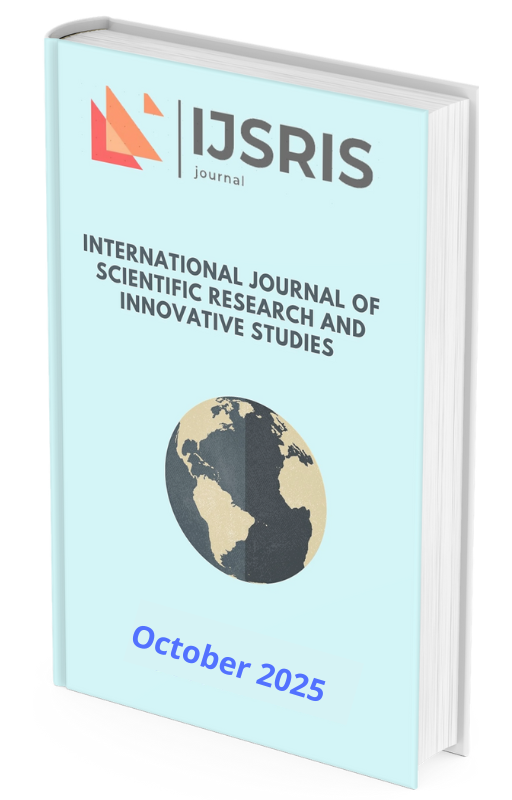Contribution of Geospatial Technologies and Multicriteria Analyses for Estimating the Yield Potential of an Oil Palm Plantation : Case of the Niamtam Palm Plantation in the Nkam Department, Littoral Region, Cameroon
DOI:
https://doi.org/10.63883/ijsrisjournal.v4i5.490Abstract
The low productivity of oil palm in Cameroon constitutes a major constraint to the development of the sector. This situation is explained by aging plantations, empirical management of inputs, and limited control of intra-plot variability. This thesis aims to contribute to production optimization through the use of geospatial sciences and technologies, combined with multicriteria and multivariate analysis. The methodology employed relies on a combination of remote sensing and spatial analysis tools, integrated within ArcGIS Pro and PhilCarto. Climatic parameters (temperature, precipitation, sunlight) and pedological variables (clay, sand, silt, organic matter, nitrogen, CEC, and water-holding capacity) were utilized. Principal Component Analysis (PCA) identified the most influential variables on soil productivity, distinguishing four main components : (i) a textural and physico-chemical soil gradient, (ii) hydric dynamics and organic fertility, (iii) solar radiation and soil structure, and (iv) secondary climatic variability. The map resulting from the multicriteria analysis revealed five classes of yield potential : very low, low, medium, good, and optimal. Out of a total area of 230 ha, 6.96 % of plots have very low yield, 18.26 % low yield, 31.30 % medium yield, 26.96 % good yield, and 16.52 % optimal yield. The integration of pedological and climatic data, supported by literature, allowed defining a yield range between 12 and 25 t/ha/year, from very low to optimal zones, and refined the estimates for Ferralsols and Acrisols. The current total production of the plantation is estimated at 4,432 t of fresh fruit bunches per year. An improvement scenario, in which less productive soils reach optimal yield, shows a potential gain of 1,318 t/year, representing a 29.73 % increase and nearly 1.98 billion FCFA/year at the official price of palm oil in Cameroon (1,500 FCFA/L). These results highlight the importance of targeted management of less productive soils through organic amendments, rational fertilizer application, improved drainage, and regular agronomic monitoring. The integration of smart sensors for real-time monitoring of soil pH, temperature, and chemical composition is also proposed as an innovative solution to enhance precision in agricultural management. Globalisation and digitalisation have had a profound impact on public discourse and modern communication within contemporary institutions. In Morocco, these developments have resulted in an ongoing attempt to reconcile the tensions inherited from deeply rooted cultures with the contemporary demands of institutionalisation, namely efficiency and transparency. Based on Hofstede's intercultural model and the work of Bourdieu, Giddens, Morin, and Habermas, this article takes a systemic approach to culture and communicational interactions in public organisations in Morocco. Drawing on an analysis of national administrative culture and theories of structuration and communicational rationality, the author shows the impact of societal values, hierarchical distance, collectivism, and cohesion on inter-state relations and public institutions. Far from being reduced to the circulation of information, public communication, in its modern function, is articulated around a field of tension and power relations where modernity, tradition, and the space for co-civism are negotiated.
Keywords : Oil palm, Agricultural productivity, Multicriteria analysis.
Received Date: August 21, 2025
Accepted Date: September 13, 2025
Published Date: October 01, 2025
Available Online at https://www.ijsrisjournal.com/index.php/ojsfiles/article/view/490
Downloads
Downloads
Published
How to Cite
Issue
Section
License

This work is licensed under a Creative Commons Attribution 4.0 International License.
Articles in IJSRIS Journal are published in open access under the Creative Commons Attribution License (CC BY) (https://creativecommons.org/share-your-work/cclicenses


































